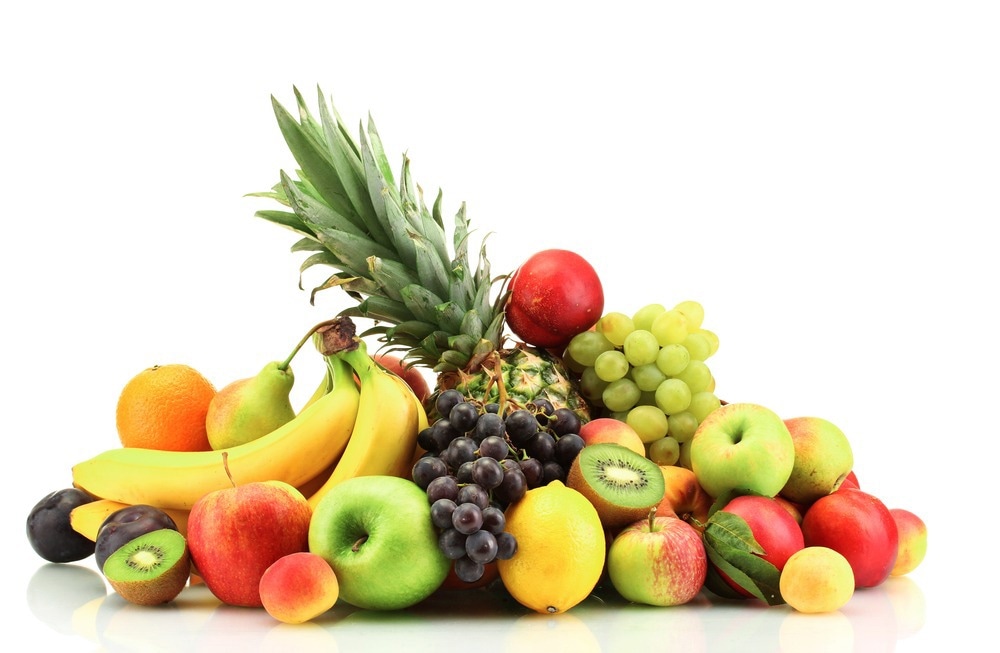Writing in the journal Food Hydrocolloids, a team of researchers from Zhejiang University in China has investigated porous hydrogel packaging for the safe transportation and storage of delicate fruits such as strawberries.

Study: Fabrication and characterization of novel porous hydrogels for fragile fruits: A case study. Image Credit: Africa Studio/Shutterstock.com
Ensuring the Quality of Delicate Fruits
Making sure that food is of a high standard of quality for consumption is a key focus of research in the food and agriculture industries. Optimal storage conditions during transportation, storage, and sale are crucial to ensuring that products meet the quality demands of retail and consumers.
Mechanical damage during transportation is a major contributing factor to food quality, especially delicate products such as fruit. Specifically, soft textured fruit such as raspberries and strawberries are fragile and therefore vulnerable to damage during transportation and storage.
Seemingly insignificant damage to soft textured fruit varieties can lead to critical quality issues over a short period of time, such as enzymatic browning, highly disordered volatility, and programmed cell death. Moreover, physical damage produces imperfections in the surface of soft textured fruits, which make them more vulnerable to fungal growth, causing food safety issues, food waste, and economic loss for companies.
Strategies for Reducing Damage to Soft Textured Fruits
Mitigating damage during transportation is a key strategy to improve the quality and shelf-life of delicate fruits. Several methods have been employed over the years to overcome these issues, including corrugated packaging, polyurethane foam, and expandable polyurethane. These methods dissipate impact energy and reduce the likelihood of fruits being spoiled in the supply chain.
In recent decades, research has focused on the development of novel cushioning materials for the safe transportation of fragile fruits. Many studies have demonstrated the benefits of advanced materials such as artificial spider silk and 3D-printed nanocellulose aerogels.
However, despite benefits such as significantly improved energy absorption efficiency, there are still challenges associated with novel materials developed in recent years for fruit packaging. The stiffness of materials still causes abrasion on the surface of soft-bodied fruits, and commercial applications are limited by the cost of materials and technical challenges associated with their manufacture.
The Study: Developing a Novel Soft and Porous Hydrogel Packaging Option
As can be seen, there is a critical need to develop soft and reliable fruit packaging materials and technologies that can reduce the damage caused during transit and ensure the quality and shelf-life of soft-bodied fruits. Ideally, these materials should be economically viable, non-toxic, safe, have good mechanical and physical properties, and possess enhanced energy dissipation performance.
The strategy employed by the authors involves a well-documented soft advanced material that has been employed in numerous industries – hydrogels. Hydrogels are gels in which water is the liquid component. These physically or chemically cross-linked polymer networks are highly absorbent yet maintain their well-defined structure.
Hydrogels possess advantageous properties such as viscoelasticity, poroelasticity, self-healing, and controllable environmental reactions such as shock absorption and temperature responses. The hydrogels in the research were prepared from calcium ion cross-linked alginate networks and soy protein isolates. The isolates produced foams with stable pore properties, which then underwent gelation to fabricate functional hydrogels.
Mechanical properties were evaluated, along with categorization of the hydrogel’s energy dissipation rate as a function of loading rate and deformation. Cyclic tests were employed to detect energy dissipation rates and modulus. To assess the suitability of the prepared hydrogel, it was used as packaging for strawberries and tested in transportation and free-fall simulations.
Study Findings
The author’s experiments demonstrated that the novel porous hydrogel provided superior protection for soft-bodied fruits. Strawberries packaged in this material suffered less damage and retained higher sensory values than strawberries packaged in commercially available materials.
Another key finding was that the porous hydrogel helps to maintain the low temperatures required for safe transportation and storage of soft-bodied fruits due to its thermal insulating properties. Other benefits highlighted in the study include the environmental friendliness of the raw materials used in hydrogel preparation, biodegradability, cost-effectiveness, non-toxicity, and the edible nature of the packaging material.
In regard to shock-absorbing capabilities, the porous hydrogel dissipated between seventy and seventy-eight percent of the impact energy. The superior thermal insulation capabilities of the material also help to solve a critical issue in fresh food supply chains, namely the “last-mile” long-chain logistical problem.
Finally, the researchers have highlighted the potential future uses of their novel porous hydrogel. Due to the safe, sustainable, and green nature of the material, it can be considered for transporting a wide range of fresh produce and can even be used for the improved transportation of live organs for the biomedicine and healthcare sectors.
More from AZoM: What is the Function of Isotopic Analysis?
Further Reading
Wang, L et al. (2022) Fabrication and characterization of novel porous hydrogels for fragile fruits: A case study Food Hydrocolloids 108167 [online, pre-proof] sciencedirect.com. Available at: https://www.sciencedirect.com/science/article/pii/S0268005X22006877?via%3Dihub
Disclaimer: The views expressed here are those of the author expressed in their private capacity and do not necessarily represent the views of AZoM.com Limited T/A AZoNetwork the owner and operator of this website. This disclaimer forms part of the Terms and conditions of use of this website.